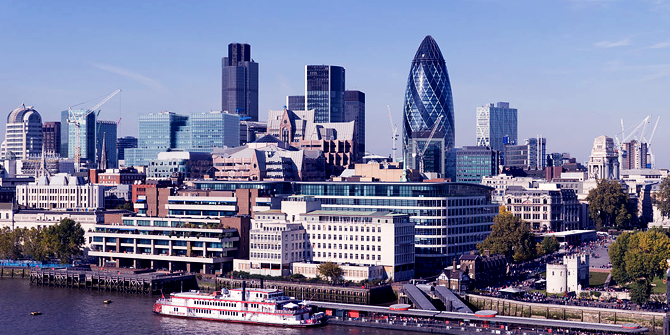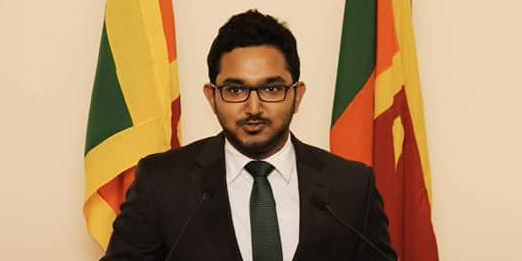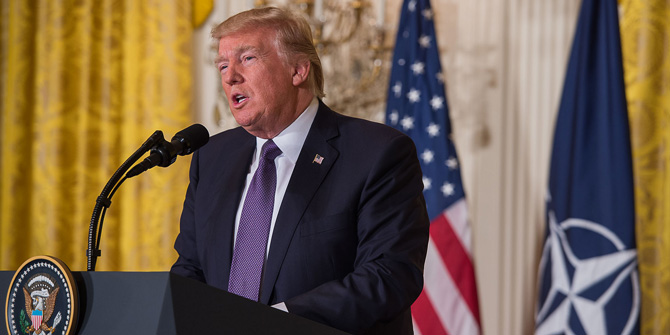
With Sadiq Khan and Zac Goldsmith leading the polls going into the London Mayoral Elections on May, Martin Rogers and Tony Travers analyse some of the key manifesto pledges being made and what they tell us about the major issues facing the incoming Mayor of London.
Housing
Labour candidate Sadiq Khan has made housing a major feature of his campaign with his pledge to make 50 per cent of new homes ‘genuinely affordable’. No detail has been included in the manifesto about what will constitute ‘genuinely affordable’ other than references to ‘Homes for social rent’, ‘Homes for London Living Rent’ and Homes for first-time buyers to ‘part-buy part-rent’. Khan has centred his ambitions for the building of housing units on the establishment of ‘Homes for Londoners’ which is described as a ‘London-wide not-for-profit lettings agency’. Khan has also pledged to utilise land owned by the mayor (such as Transport for London’s estate) and to bid for the development of other land owned by the public sector. Khan has also pledged to ‘support’ housing associations in an attempt to double their building of housing units from 90,000 homes to 180,000. It is not clear what time scale is involved in this pledge.
Conservative Zac Goldsmith has also made housing central to his bid for Mayor. While Khan has not pledged any specific numbers in terms of housing units, Goldsmith has included a pledge to build 50,000 homes a year by 2020 in his manifesto. Goldsmith has, like Khan, identified ‘brownfield’ public land as the focus for the building of new homes. Goldsmith has specifically pledged to amend the mayor’s London Plan to address the practice of ‘hoarding’ by developers and to “‘set aside’ more homes for ‘struggling’ people who don’t qualify for social housing”. Additionally, Goldsmith has pledged to ensure that “a significant proportion of all new homes are only for rent and not for sale” which, if enacted, should increase the supply for housing for renters and thus address the current cost of living associated with renting in London.
In essence both candidates’ housing policies are somewhat similar. Both promise significant infrastructure spending on housing and both candidates commit to using public, Mayor-owned or TFL-owned, land for building housing units. Goldsmith has made a commitment on numbers which Khan has not. Khan, on the other hand, has promised a 50% target for affordable homes. Both have implied that there will be some form of preferential treatment for those who live and work in London when it comes to housing units.
The key questions which arise from these manifesto pledges are:
- How possible will it be to ensure that a certain number of units are ‘genuinely affordable’?
- Is the available supply for public brownfield land sufficient for the building and development of the housing units pledged by each candidate?
- How possible will it be to mandate a set number of units for social rent, ‘living rent’ and first time part-rent-part-buy households?
- What will the effect be of the new agency Homes For Londoners if it is enacted?
- How feasible will the use of public land be?
- How possible will it be to stop developers ‘hoarding’?
- How possible will it be to define and mandate “a significant proportion of all new homes only for rent and not for sale”?
- Perhaps the biggest question is how a return to local preference housing would work and what the effects of it would be
Liberal Democrat candidate Caroline Pidgeon has pledged to build 50,000 council homes to rent plus an additional 150,000 for sale or private rent by 2020. Additionally she has pledged to set up a number of new organisations such as a City Hall building company, a skills academy, a London Housing Company, a Mayoral Development Corporation, as well as a central unit which will prosecute rogue landlords. Pidgeon has also identified public-held brownfield land for the building of housing units. Her manifesto states that “A total area equating to 3,745ha (or 2.5% of the entire area of Greater London) could be classified as Brownfield”.
Pidgeon’s manifesto has explicitly spelled out measures to address the current rental situation by extending the mandatory registration of landlords, encouraging landlords to offer longer tenancies, action to tackle ‘unfair’ letting agent fees, and ensuring more rights for tenants when landlords sell their properties. On the latter, only offering tenants a first refusal in the case of a sale is mentioned which may not be of use to renters unable to afford to buy the property. Beyond this, what this latter measure entails is not spelled out.
The Green Party candidate Sian Berry’s manifesto pledges to make 200,000 homes available by 2020 through a combination of new building and the redevelopment of current properties. Berry has also committed to rent controls as well as a number of measures to limit rental costs such as establishing a London Renters Union, a People’s Housing Precept, People’s Land Commission, Community Homes Unit as well as stopping estate demolitions and offering residents a Right To Regenerate.
The Green Party manifesto can perhaps be seen as the most traditionally ‘left-wing’ offering from all of the major parties with the inclusion of such relatively radical policies as rent control.
Transport
One of the most high profile pledges of this campaign is Khan’s pledge to freeze transport fares for four years. Goldsmith has not matched this commitment and instead has focused on ‘protecting concessions’, improving the transport infrastructure and nationalising suburban rail services. Goldsmith has pledged to “bear down on fares by creating new sources of income for TfL” though what ‘bear down’ means is currently unclear. Both Khan and Goldsmith have focused on ‘inefficiencies’ at Transport for London such as underutilised staff and better handling of the trade unions respectively.
Khan has pledged to chair Transport for London (TfL) in order to be involved in TfL’s decisions, which will be critical to his pledge to freeze fares. He has also pledged to make TfL “a more efficient and profitable operation” and deliver the fares freeze without any loss to service improvements or capacity. TfL currently has significant financial reserves, so the cost of a fare freeze may utilise some of these. Khan does not address the cost of this pledge in his manifesto while Goldsmith cites TfL’s own figures that Khan’s pledge will cost £1.9 billion.
Both candidates have prioritised significant spending on infrastructure. Khan’s manifesto commits him to the Night Tube, expanding the Cycle Superhighway Programme, starting Crossrail 2 and, longer-term, looking to commit to projects such as Crossrail 3 and improvements to the transport infrastructure in outer London as well as extending the Bakerloo line to Lewisham.
The question remains as to whether this significant new transport infrastructure will be as easily delivered under the conditions of a fare freeze than without one.
Goldsmith has generally committed to more specific infrastructure projects such as the Night Tube. Goldsmith has pledged to introduce the Night Tube service then to extend the initial run to other lines and other services such as London Overground. He has also pledged to increase capacity on the Circle and Hammersmith & City, District line and Metropolitan lines before investing in new rolling stock for the Jubilee and Northern lines by 2021. Both candidates also mention an additional river crossing, with Goldsmith committing to such a crossing in East London to be privately-financed and with a lane in each direction for buses and HGVs..
Liberal Democrat Caroline Pidgeon has also pledged action on the cost of fares with her manifesto featuring a promise to halve tube, DLR and Overground fares before 7:30am and the introduction of a one-hour bus ticket. It is implied that these measures will be financed by ‘cutting waste’, in this case at TfL. Additionally Pidgeon has pledged to ‘re-zone’ some tube and rail stations in order to reduce some fares while maintaining infrastructure spending and extending the tube and Crossrail 2.
The Green Party has perhaps made the most extensive and significant promises. Berry has pledged to cut the number of TFL zones, to introduce flat fares by 2025, to lower daily caps, to cut fares for outer London and allow passengers to change between services at no extra cost. Additionally the Green Party have pledged to nationalise commuter rail services, stop new runways at Heathrow, Gatwick or London City Airports and power Crossrail with a newly set up not-for-profit London Energy Company.
Business
Khan has stated his desire to be “the most pro-business Mayor yet”. His manifesto includes a pledge to establish a Business Advisory Board as an agency to engage with the mayor, though there are no specific proposals in the manifesto. Khan has also looked to focus on skills with the establishment of an organisation called Skills for Londoners and would appoint a Chief Digital Officer. Sadiq Khan would also “support new aviation capacity for London, backing a second runway at Gatwick”.
Goldsmith has referenced business concerns about affordable housing and transport infrastructure to frame his support for investment in these areas. Similar to Khan, Zac Goldsmith has pledged to set up a Business Advisory Group to publish a ‘public scorecard’ though responsibility for the Business agenda will be delegated to the Deputy Mayor for Business. Goldsmith has also looked to utilise TfL land to deliver improvements in infrastructure by improving broadband availability. Goldsmith also focusses on skills with a commitment to lobby for the mayor to gain control of the adult skills budget from 2019. Goldsmith also makes much of the importance of technology-based business and pledges to launch an annual £1million “Mayor’s Tech Challenge” where the mayor’s office will set out the challenges it sees as important to London and invite businesses to win funding to solve them.
The Liberal Democrats make Britain remaining within the European Union central to their business plan as well as improving Londoners’ skills. Caroline Pidgeon’s manifesto supports the devolution of the adult skills budget to Mayoral control as well as setting up a ‘Business Board’ to coordinate skills with business’ need for them.
The Green Party has an extensive section on business in their manifesto beginning with the pledge to establish a ‘Bank For London’ to finance small enterprises. The Green party have placed small businesses at the heart of their manifesto alongside pledges to protect live music venues and, interestingly, “London’s vital remaining high street launderettes”.
In Summary
To summarise, the manifestos of the Labour and Conservative candidates have some similarities. Both indicate that housing and transport are priorities for the new mayor as both promise significant infrastructure spending on housing and transport and both promise to set up large numbers of mayoral committees and boards. Both candidates commit to using public, mayor-owned or TFL-owned land for building housing. Goldsmith has made a commitment on housing numbers which Khan has not and Khan has promised a fare freeze which Goldsmith has not.
In each case, where any reference to costings exist, Transport For London appears likely to be squeezed to produce more for less, with either Khan’s fare freeze or Goldsmith ‘bearing down’ on fares. At the same time each candidate has promised to deliver the Night Tube, Crossrail 2 and other public transport improvements. Both candidates have also shown their support for public ownership of the commuter railways in London so the costs of the pledges in their manifestos are significant and thus the winning candidate may face difficult choices in terms of implementation.
Both Khan and Goldsmith have implied that there will be some form of preferential treatment for those who live and work in London when it comes to housing units – how viable these pledges are is not addressed, nor is how workable it is to mandate the use of housing for rent only or for certain groups of people.
 For the latest analysis of 2016’s electoral contests, go to UK Elections 2016 on GovBlog.
For the latest analysis of 2016’s electoral contests, go to UK Elections 2016 on GovBlog.
 Tony Travers is a Visiting Professor in the LSE Department of Government and Director of LSE London, a research centre at the London School of Economics.
Tony Travers is a Visiting Professor in the LSE Department of Government and Director of LSE London, a research centre at the London School of Economics.
 Martin Rogers is a recent graduate of the Department of Social Policy at the LSE and host of the LSE Department of Government’s video series The HotSeat
Martin Rogers is a recent graduate of the Department of Social Policy at the LSE and host of the LSE Department of Government’s video series The HotSeat
Follow Martin on Twitter – @MNBRogers





